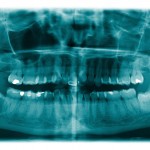
Removal of impacted lower third molars is a common procedure. The incidence of damage to the inferior alveolar nerve (IAN) ranges between 0.4 – 8.4% while incidence of lingual nerve (LN) damage varies from 0.1% to 22%. The coronectomy technique was proposed in the 1980s to mitigate the risk of IAN and IN injuries. Complications of coronectomy are similar to those for third molar extraction apart from root migration which is usually in a coronal direction.
The aim of this review was to compare coronectomy versus extraction in patients at increased risk of inferior alveolar nerve (IAN) injuries associated with third molar removal in terms of IAN injury and other complications.
Methods
Searches were conducted in the Cochrane Library, Embase, Livivo (https://www.livivo.de), PubMed, Scopus and Web of Science databases. Studies reporting on lower third molar extraction at an increased risk of IAN injury having coronectomy or complete extraction were considered. Two reviewers independently screened and selected studies extracted studies and assessed risk of bias. The Joanna Briggs Institute’s (JBI )critical appraisal checklist for studies reporting prevalence data and the critical appraisal checklist for case reports were used. The main outcomes were the frequency of injury to the IAN and LN, as well as the incidence of other surgical complications. Dichotomous outcomes were reports as odds ratios (ORs) with 95% confidence intervals (95% CI)
Results
- 42 studies (29 cohort,13 case-control) were included.
- None of the studies were considered to be at high risk of bias, 4 were considered to be at moderate risk and remainder at low risk.
- The crude numbers of coronectomies, extractions and complications are shown in the table below
| Coronectomy (%) | Extraction (%) | |
| Teeth in close proximity to mandibular canal | 3904 (100.00) | 781 (100.00) |
| IAN sensory loss | 39 (0.99) | 62 (7.93) |
| IN sensory loss | 5 (0.12) | 1 (0.12) |
| Postoperative pain | 406 (10.39) | 132 (16.90) |
| Postoperative infection | 143 (3.66) | 22 (2.81) |
| Localised alveolitis | 46 (1.17) | 32 (4.09) |
- 26 studies reported on root migration shown a migration rate of 7.99%.
- Meta-analysis showed a reduction in the odds of IAN sensory loss in favour of coronectomy and an increase in the odds of surgical reintervention. There was no difference in the odds for postoperative pain or localised local alveolitis (see table below).
| No of studies | Odds ratio (95%CI) | |
| Sensory loss of the IAN | 10 | 0.14 (0.07 to 0.03) |
| Postoperative pain | 5 | 0.97 (0.33 to 2.87) |
| Localized alveolitis | 6 | 0.38 (0.13 to 1.09) |
| Surgical reintervention | 7 | 5.39 (1.15 to 25.28) |
Conclusions
The authors concluded: –
… coronectomy is associated with a decreased risk for IAN injury and decreased pain and localized alveolitis when compared to complete tooth extraction. However, it is essential to acknowledge the higher likelihood of requiring reintervention with coronectomy. Therefore, clinicians should carefully consider the advantages and potential drawbacks of both techniques and tailor their choices to the unique clinical circumstances of each patient.
Comments
No protocol for the review was registered. It is interesting to look at the PROSPERO database which lists 11 records of review titles related to aspects of coronectomy registered between 2014 and 2023. Of the 11 titles only one is by Abu-Mostafa et al recorded as being published. The reviewers have searched a good range of databases and included 42 studies none of which were recorded as randomised controlled trials (RCTs) in comparison the Abu-Mostafa review includes 3 RCTs and 4 controlled clinical trials. While 42 studies are included in this review the authors highlight the heterogeneity of the study designs, outcome measures follow-up periods and protocols as well as the small study samples and short follow up times. Both this review and the earlier review by Abu-Mostafa et al., indicate a lower risk of IAN nerve damage with coronectomy for managing impacted third molars with a high-risk IAN damage, although an extended follow up period is required.
Links
Primary Paper
Peixoto AO, Bachesk AB, Leal MOCD, Jodas CRP, Machado RA, Teixeira RG. Benefits of Coronectomy in Lower Third Molar Surgery: A Systematic Review and Meta-analysis. J Oral Maxillofac Surg. 2023 Oct 6:S0278-2391(23)01170-9. doi: 10.1016/j.joms.2023.09.024. Epub ahead of print. PMID: 37925166.
Other references
Abu-Mostafa N, AlRejaie LM, Almutairi FA, Alajaji RA, Alkodair MM, Alzahem NA. Evaluation of the Outcomes of Coronectomy Procedure versus Surgical Extraction of Lower Third Molars Which Have a High Risk for Inferior Alveolar Nerve Injury: A Systematic Review. Int J Dent. 2021 Nov 12;2021:9161606. doi: 10.1155/2021/9161606. PMID: 34804169; PMCID: PMC8604579.
Dental Elf – 13th Dec 2017
Coronectomy – a safe option for deeply impacted mandibular third molars?
Dental Elf coronectomy blogs
